According provided by Nikon ED AF-S Nikkor 70-300mm 1: 4.5-5.6G VR IF SWM lens is huge thanks to the store www.fotika.com.uawhere you can find a huge number of different used photographic equipment, including similar lenses.
Nikon ED AF-S Nikkor 70-300mm 1: 4.5-5.6G VR IF SWM (short for Nikon 70-300 VR) is the classic telephoto zoom lens for Nikon FX full-frame cameras. Such zooms are in great demand for a wide range of photographic tasks. In 2006, Nikon 70-300 VR replaced the older model. Nikon ED AF Nikkor 70-300mm 1: 4-5.6D and for some time it was produced along with an add-on lens Nikon AF Nikkor 70-300mm 1: 4-5.6G. At the time of writing this review (summer 2015), the Nikon 70-300 VR is the only manufactured native telephoto lens of its kind. I think the Nikon 70-300 VR is the best option for anyone who does not want to mess with the more expensive and heavy professional class telephoto lenses of the 70 (80) -200 / 2.8.
All Original Similar Nikon FX Telephoto Lenses
Below is a list of all Nikon Nikkor telephoto lenses without high aperture and with auto focus support:
- Nikon AF Nikkor 70-210mm 1: 4, 1986-1987
- Nikon AF Nikkor 70-210mm 1:4-5.6, 1987-1993
- Nikon AF Nikkor 75-300mm 1:4.5-5.6, 1989-1998
- Nikon AF Nikkor 80-200mm 1:4.5-5.6D, 1991-1999
- Nikon AF Nikkor 70-210mm 1:4-5.6D, 1993-2000
- Nikon AF Micro Nikkor 70-180mm 1: 4.5-5.6D ED, 1997-2005
- Nikon AF Nikkor 75-240mm 1:4.5-5.6D, 1999-2000
- Nikon AF Nikkor 70-300mm 1:4-5.6D ED, 1998-2006
- Nikon AF Nikkor 70-300mm 1:4-5.6D, 1998-2006 (?)
- Nikon AF Nikkor 70-300mm 1:4-5.6G, from 2000 to 2014, black or silver
- Nikon AF S Nikkor 70-300mm 1:4.5-5.6G ED VR IF SWM, from 2006 to 2017
- Nikon AF S Nikkor 70-200mm 1: 4G ED SWM VR IF N Nano Crystal Coat, from 2012 to the present day
- Nikon AF-P Nikkor 70-300mm 1:4.5-5.6E VR ED, 2017 to present
The names of the lenses are indicated according to their spelling on the case.
Main technical characteristics of Nikon ED AF-S Nikkor 70-300mm 1: 4.5-5.6G VR IF SWM:
| Review Instance Name | Nikon ED AF-S Nikkor 70-300mm 1: 4.5-5.6G VR IF SWM Ø 67 made in Thailand US2603898 |
| Basic properties |
|
| Front Filter Diameter | 67 mm, plastic thread for filters |
| Focal length | 70-300 mm EGF for Nikon DX cameras is 105-450 mm |
| Zoom ratio | 4.3 x |
| Designed by | for digital cameras Nikon FX |
| Number of aperture blades | 9 rounded petals |
| Tags | focusing distance in meters and feet, focal lengths for 70, 100, 135, 200, 300 mm, bayonet mount mark, hood mount mark, mark for working in the infrared spectrum |
| Diaphragm | 70 mm from F / 4.5 to F / 32. At 300 mm from F / 5.6 to F / 40. The lens does not have an aperture ring (G - lens type) |
| MDF (minimum focusing distance) | 1.5 m over the entire range of focal lengths, maximum magnification ratio 1: 4 |
| The weight | 745 g |
| Optical design | 17 elements in 12 groups. The circuit includes 2 low dispersion element (shown in yellow in the optical diagram). The presence of such elements is indicated on the case with the abbreviation 'ED'. The red frame indicates the lenses included in the stabilizer.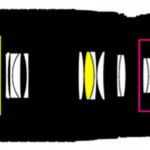 The image of the optical circuit is clickable. The image of the optical circuit is clickable. |
| Lens hood | Nikon HB-36 |
| Manufacturer country | Made in thailand |
| Period | From August 9, 2006 to July 11, 2017. Subsequently replaced by Nikon VR ED AF-P NIKKOR 70-300mm 1: 4.5-5.6E. |
| Instruction (multilingual) | Download, mirror 1 |
| Price |
In 2012, a more advanced model of this telephoto lens came out - Nikon N AF-S Nikkor 70-200mm 1: 4G ED SWM VR IF Nano Crystal Coat.
Assembly
All Nikon 70-300 VR lenses come from Thailand. To the touch the lens is quite pleasant and weighty, its weight is a little more than 700 grams. On cameras Nikon D700 и Fujifilm FinePix S5 Pro its weight does not cause any discomfort.
Nikon 70-300 VR uses 67 mm standard filters. The zoom ring is very wide, rubberized and comfortable, it’s much more convenient to rotate it than, say, the model Nikon 28-300mm 1: 3.5-5.6G VR... The focusing ring is plastic. Nikon 70-300 VR has metal bayonet mount. Almost the entire outer rim of the case is made of plastic. The retractable frame of the case consists of one section and is quite durable to the touch. As for the amateur lens, the Nikon 70-300 VR has good build quality. At one time, I used the Nikon 70-300 VR for a year, and at the same time, the lens did not begin to suffer from the spontaneous extension of its trunk.
There is a mark on the case for quick installation of the hood. The lens uses a plastic hood HB-36, which is fixed in special grooves located near the front lens of the lens. The hood can be installed in the opposite direction for transportation. In this position, it is somewhat inconvenient to use the zoom. While changing the focal length, the lens hood moves with the trunk of the lens.
On the bayonet side, the lens has a special rubber gasket, which serves to protect the lens from dust and moisture. On official sources, accurate confirmation that the Nikon 70-300 VR is a dustproof and waterproof lens cannot be found. At the same time, I am inclined to believe that because of this rubber seal, the lens still has at least some basic dust protection.
When changing the focal length, the rear lens moves in the middle of the lens body like a pump - it draws in and pushes out air. This behavior of the rear lens is called 'vacuum cleaner effect', which can increase the amount of dust that accumulates in the camera. It is funny that when zooming from 70 to 100 mm, the rear lens does not move, the movement occurs only in the range from 100 to 300 mm.
Diaphragm
Diaphragm lens consists of 9 rounded petalsthat form a smooth hole. The aperture range is available from F / 4.5-5.6 to F / 32-F / 40. Unfortunately, compared to the previous version of the lens - Nikon ED AF Nikkor 70-300mm 1: 4-5.6D, the new Nikon 70-300 VR has lost some of its aperture and now uses F / 4.5 instead of F / 4, which is about 1.27 less.
There are marks with a focal length on the zoom ring, the following is a list with the minimum numbers F available for these marks:
- 70 mm - F / 4.5
- 100 mm - F / 4.5
- 135 mm - F / 4.8
- 200 mm - F / 5.3
- 300 mm - F / 5.6
Stabilizer
The Nikon 70-300 VR has a VR stabilizer (Vibration Reduction), which according to the instructions can compensate up to 4 stops by shutter speed. In numerical terms, this means that you can shoot at shutter speeds 16 times longer than what a lens without a stabilizer requires. The stabilization system of the Nikon 70-300 VR refers to second generation (VR II).
The instructions for the Nikon 70-300 VR lens indicate 4 stops (Nikon measurements), and on the official website only 2.5 stops (measured by CIPA). In any case, the stabilizer works well.
To enable / disable the stabilizer on the lens there 'VR ON / OFF' switch. There is a 'Normal / Active' switch to select a mode. The stabilizer can operate in two modes: 'Normal' and 'Active'.
- 'Normal' mode designed for most scenes and avoids movement when camera shake. Theoretically, the 'Normal' mode can still track the movement of the camera to create panoramas.
- Active Mode most suitable for shooting when the camera can not only shake, but also move in different directions. Most often, it is advised to use this mode when shooting in motion.
I managed to take pictures of stationary objects, without blur and hard work, at 300 mm focal length and 1/40 second. The stabilizer works well, but it does not compare with the stabilizer in newer models, such as Nikon 70-200 / 4G.
When the stabilizer is working, the image in the viewfinder can jerk, this is due to the methodology of the vibration reduction system, which tries to keep the picture without stirring, but when the lens deviates greatly from the 'target', the stabilizer abruptly switches to a new scene. During its operation, the stabilizer creates a barely audible hum.
Focusing
Nikon 70-300 VR focuses quietly enough thanks to 'SWM'-motor (Silent Wbird Motor - quiet wave motor) and refers to the lens'AF S'type (with built-in motor focusing), and therefore it will automatically focus on any Nikon digital SLR camera.
The minimum focusing distance is 1.5 meters, while you can shoot Macro with 1: 4.5 magnification. Nikon Nikon 70-300 VR has a window with a scale of distances in meters and feet. There is no IPIG scale, but there is a mark for 70 mm focal length for working in the infrared spectrum. In the instructions, you can find deviations during photography in the infrared spectrum and for other values of the focal length.
Nikon 70-300 VR focuses fast. Focusing speed does not cause any complaints, although inferior to more expensive lenses. On cameras Nikon D700 and and Fujifilm FinePix S5 Pro the lens focuses tenaciously (does not lose objects from the zone of sharpness). Only sometimes, at 300 mm of focal length, the lens and camera try to refocus.
During focusing, the front and rear lenses remain stationary, as the lens uses internal focusthat is indicated on the case by the letters'IF'-'Iinternal Focus' - 'Inner Focus'. During zooming, the front lens leans forward but does not rotate. Thus, it is possible to use any filters without problems, for example polarizing or gradient.
On the lens housing you can find focus switch 'M / A - M'. In the 'M / A' position, auto focus works with constant manual focus priority. The 'M / A' mode is very convenient and useful - for manual focusing or focus correction, you do not need to additionally switch the lens to the 'M' mode. As soon as you start focusing manually using the 'M / A' mode, the auto focus is immediately turned off, and the lens continues to listen to your hands until you press the focus activation button again.
The focus ring rotates to 180 degreesManual focus is easy.
Nikon 70-300 VR suffers greatly from the 'Focus Breathing' effect - changing the viewing angle when focusing.
Compatibility and Features
The lens will work correctly at all Nikon digital SLR cameras.
When using the built-in flash, especially with the lens hood installed, photos may have a black shadow.
EGF lens for Nikon DX cameras is 105-450mm. An analogue of the Nikon 70-300 VR for Nikon DX cameras can be considered Nikon DX AF-S Nikkor 55-200mm 1: 4-5.6G ED VR IF SWM and Nikon DX AF-S Nikkor 55-200mm 1: 4-5.6G ED VR II. This Nikon 70-300 VR works wonderfully on cropped cameras and does not cause much inconvenience due to recalculation EGF. In the case of telephoto lenses crop factor Nikon DX cameras in most cases only benefit.
A list of all Nikon DX series lenses can be found. here. The optical design of all Nikon DX lenses can be viewed here.
Who should use such a lens?
The lens is suitable for everyone to shoot from afar. Due to the fact that the Nikon 70-300 VR is weak aperture, you can shoot moving objects only in good light. The stabilizer does not help when shooting moving objects, it only compensates for the jitter and movement of the camera and lens. With the Nikon 70-300 VR, you can easily capture wildlife. The lens is suitable for anyone who needs a good telephoto lens.
If you need an even longer telephoto lens, you can look at an old, but not very expensive Nikon ED AF VR-Nikkor 80-400mm 1: 4.5-5.6D Vibration Reduction.
Image quality
In general, the Nikon 70-300 VR creates a pretty high-quality picture.
On open apertures, the lens is sharp in the center in the range of 70-200 mm, in the range of 200-300 mm, the sharpness is slightly worse. Also noticeable drop in sharpness at the corners and edges. If you cover the aperture, the sharpness becomes a level higher.
Chromatic aberrations well fixed. Also, the freezing is well corrected (the color of the contrast zones of blur in green and purple). Visually, in real photos, distortion it’s hard to notice, at the same time, the Nikon 70-300 VR is still small distortion there is. The lens behaves well in side and backlight, which is not surprising for a dark zoom lens
Nikon 70-300 VR blurs the background well when shooting portraits and has a nice hips. Boke even on covered diaphragms it remains quite pleasant.
You can download RAW source files at this link (26 files in the '.RAF' format, 354 MB). All photos are on-camera JPEG. All photos were shot on Fujifilm FinePix S5 Pro without using a hood.
My experience
I tried all the native budget autofocus telephoto lenses for full-size cameras (everything except Nikon AF Nikkor 75-240mm 1: 4.5-5.6D) and I think that the Nikon 70-300 VR is the best among them, although it costs much more than its brothers without an image stabilizer .
If there is no money for the Nikon 70-300 VR, then among the low-end counterparts deserves due attention Nikon ED AF Nikkor 70-300mm 1: 4-5.6D и Tamron LD DI AF 70-300mm 1: 4-5.6 Tele-Macro (1: 2)as well as a good but more expensive Tamron DI SP 70-300mm F / 4-5.6 VC USD A005NII.
Prices
Real prices for Nikon ED AF-S Nikkor 70-300mm 1: 4.5-5.6G VR IF SWM lens see here, or in the price block below:
All 70-300 Class Full Frame Lenses with Stabilizer
Sigma
- Sigma DG OS 70-300mm 1: 4-5.6 (for Sigma SA, Sony A, Nikon F, Pentax K, Canon EF / EF-S)
Tamron
- Tamron DI SP 70-300mm F / 4-5.6 VC USD A005 (for Nikon F, Canon EF / EF-S, Sony A)
Canon (EF, EF-S)
- Canon Zoom Lens EF 75-300mm 1: 4-5.6 IS USM
- Canon Zoom Lens EF 70-300mm 1: 4-5.6 IS USM
- Canon Zoom Lens EF 70-300mm 1: 4-5.6 IS II USM (NanoUSM)
- Canon Zoom Lens EF 70-300mm 1: 4.5-5.6 DO IS USM
- Canon Zoom Lens EF 70-300mm 1: 4-5.6 L IS USM
Nikon (F, FX)
Sony (E, FE)
The names of the lenses are indicated according to the inscription on their body.
Comments on this post do not require registration. Anyone can leave a comment. Many different photographic equipment can be found on AliExpress.
And a few more examples for the full frame:
All shot on Nikon ED AF-S Nikkor 70-300mm 1: 4.5-5.6G VR IF SWM. Photos in the gallery without processing.
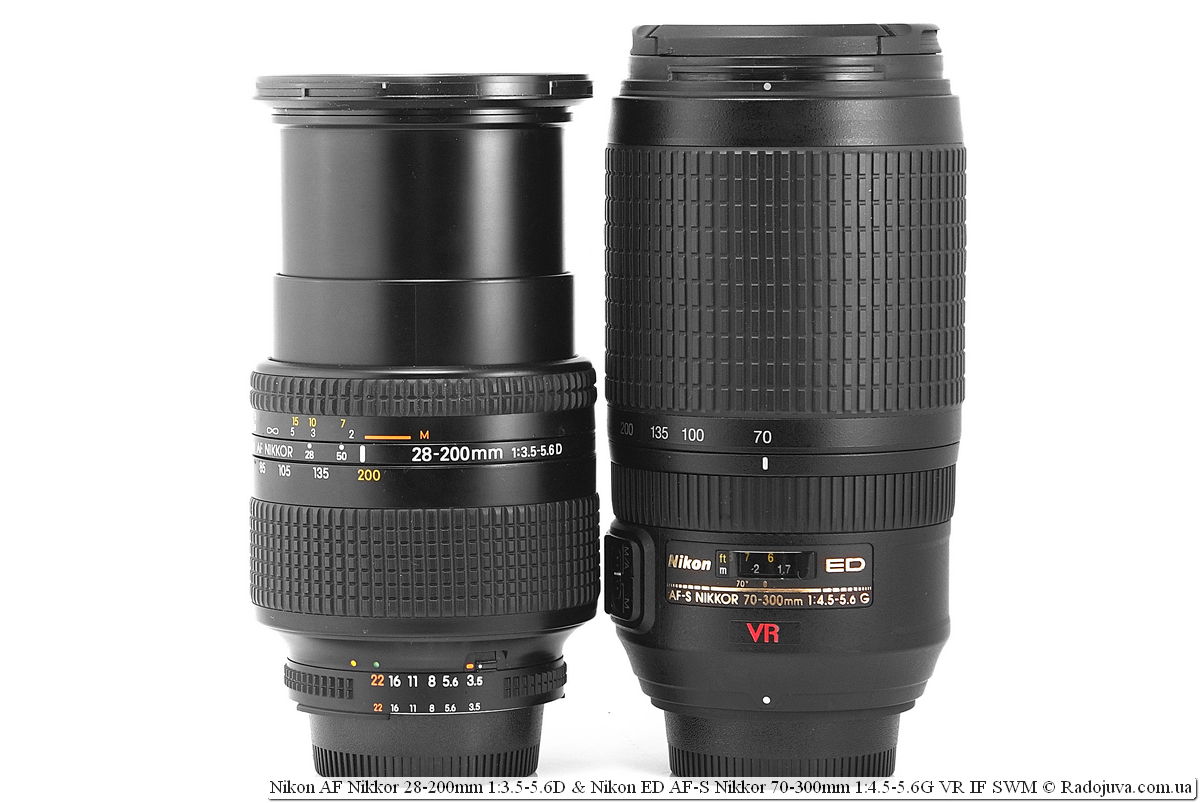
dimensions Nikon AF Nikkor 28-200mm 1: 3.5-5.6D and Nikon ED AF-S Nikkor 70-300mm 1: 4.5-5.6G VR IF SWM
Results
Nikon 70-300 VR is a good telephoto lens, the best of its kind. Perfect for Nikon FX and Nikon DX cameras.
UPDATE: On July 11, 2017, a replacement for this lens was introduced in the face Nikon VR ED AF-P NIKKOR 70-300mm 1: 4.5-5.6E.
Material prepared Arkady Shapoval. Training/Consultations | Youtube | Facebook | Instagram | Twitter | Telegram

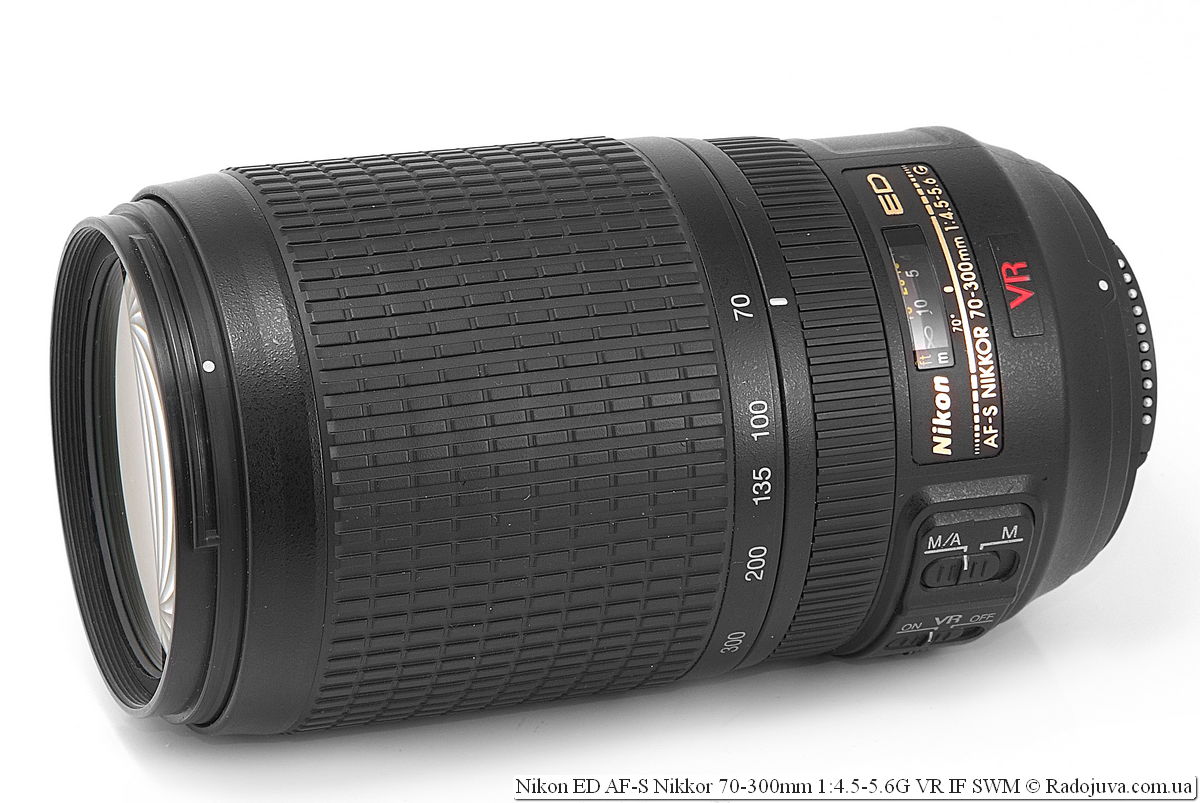
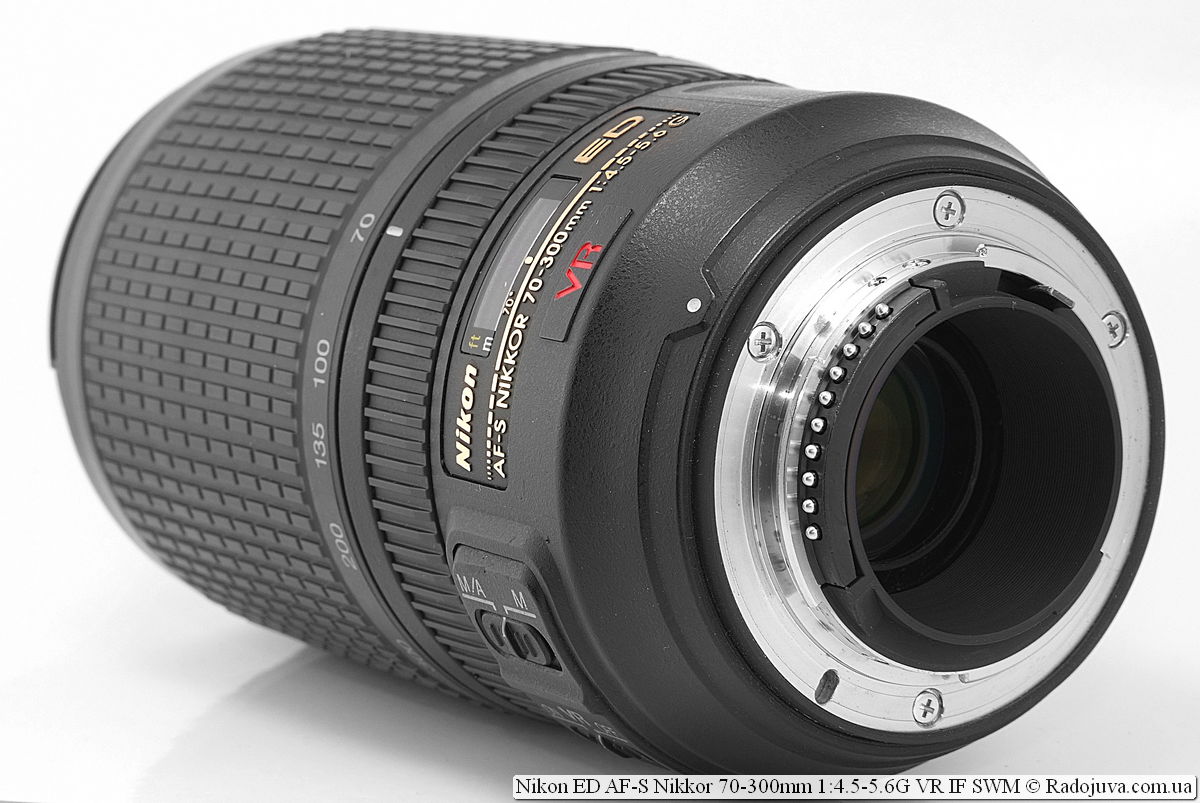
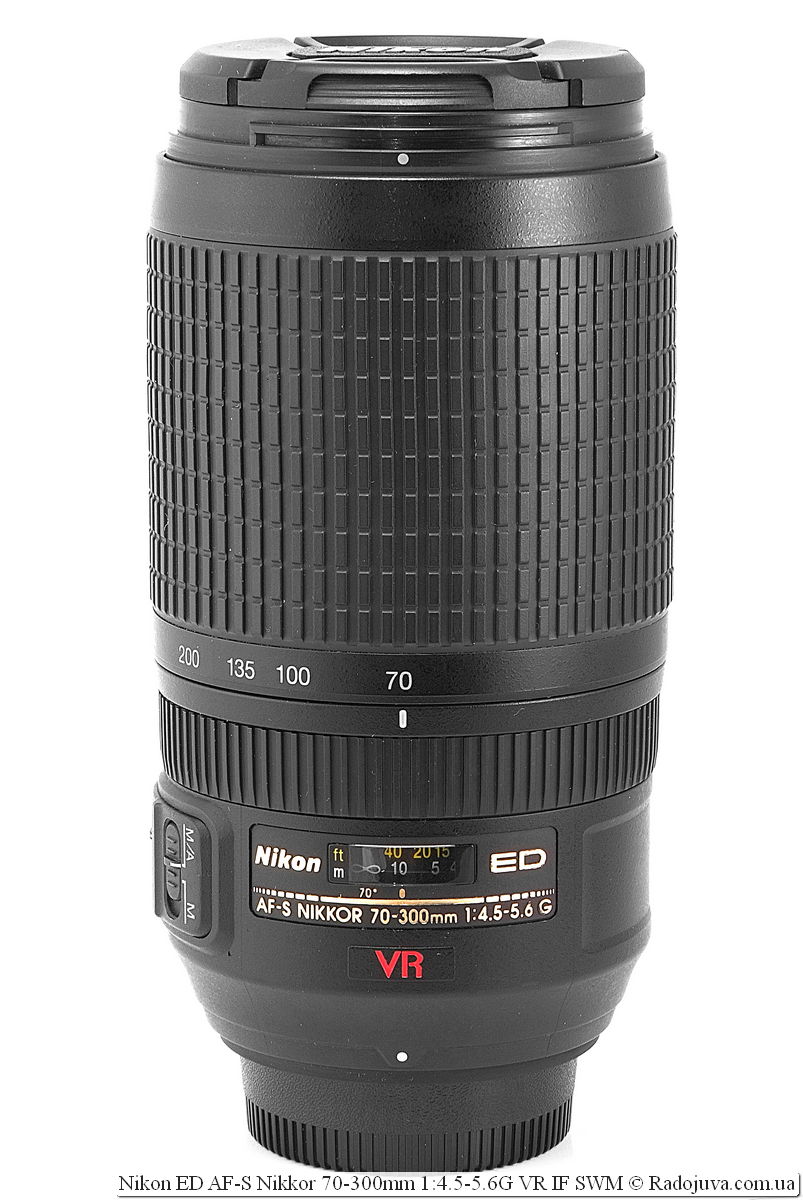
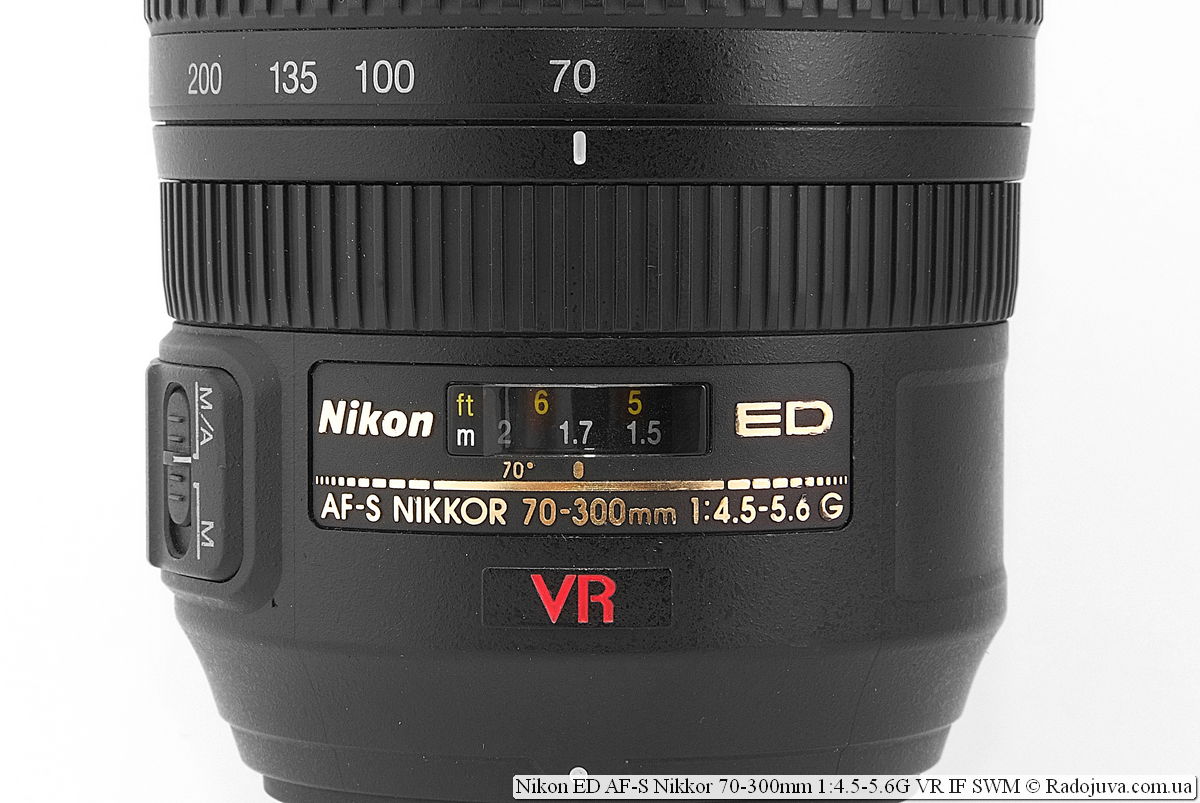
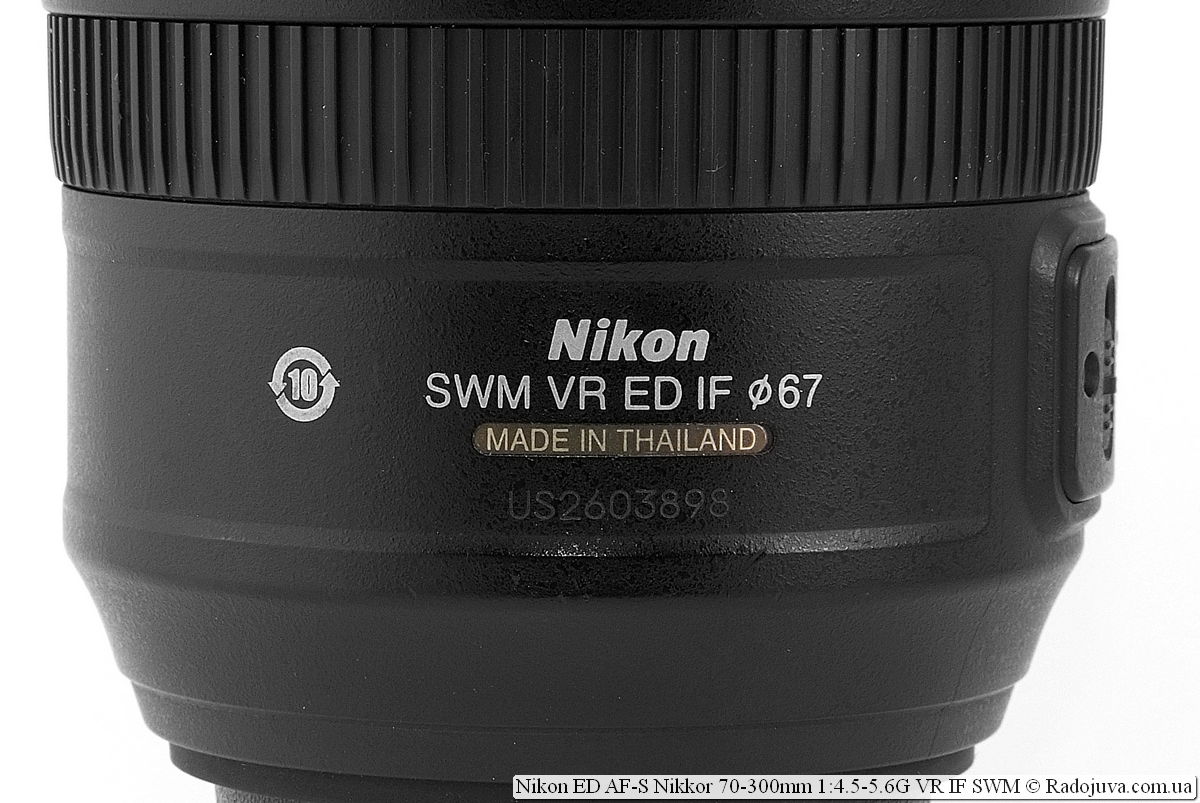
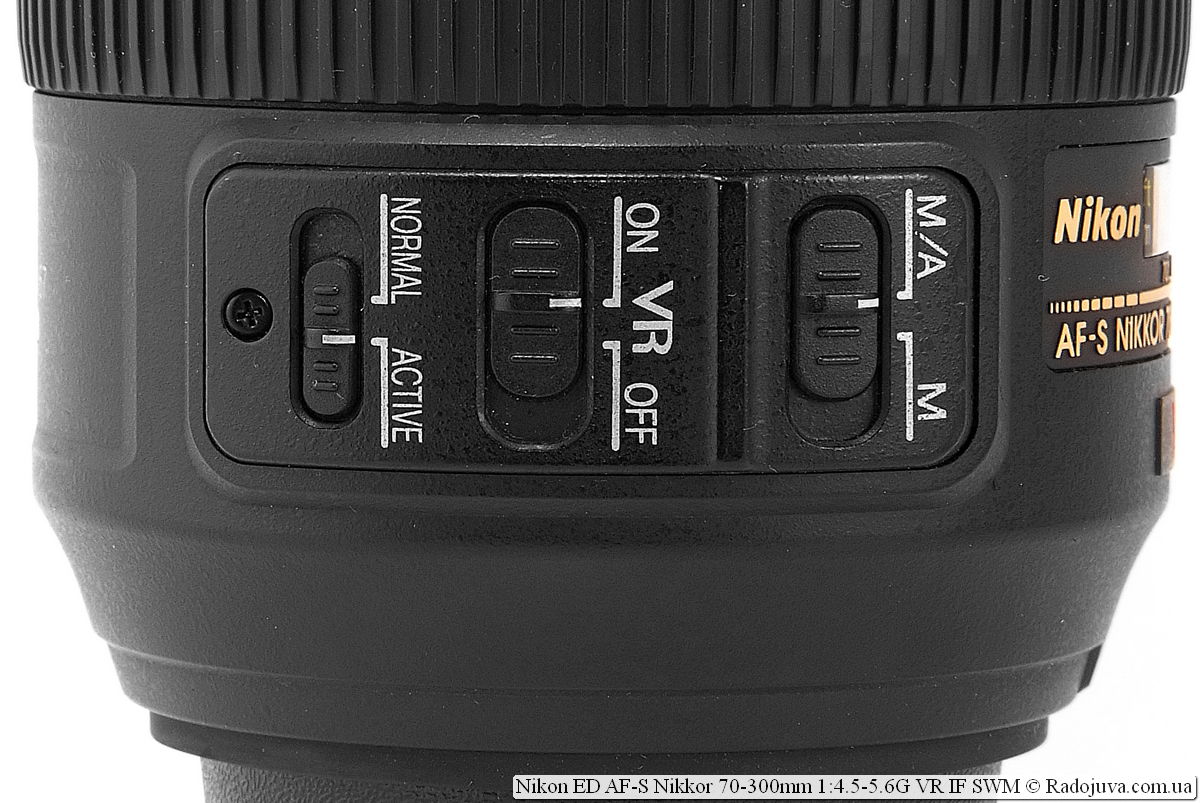
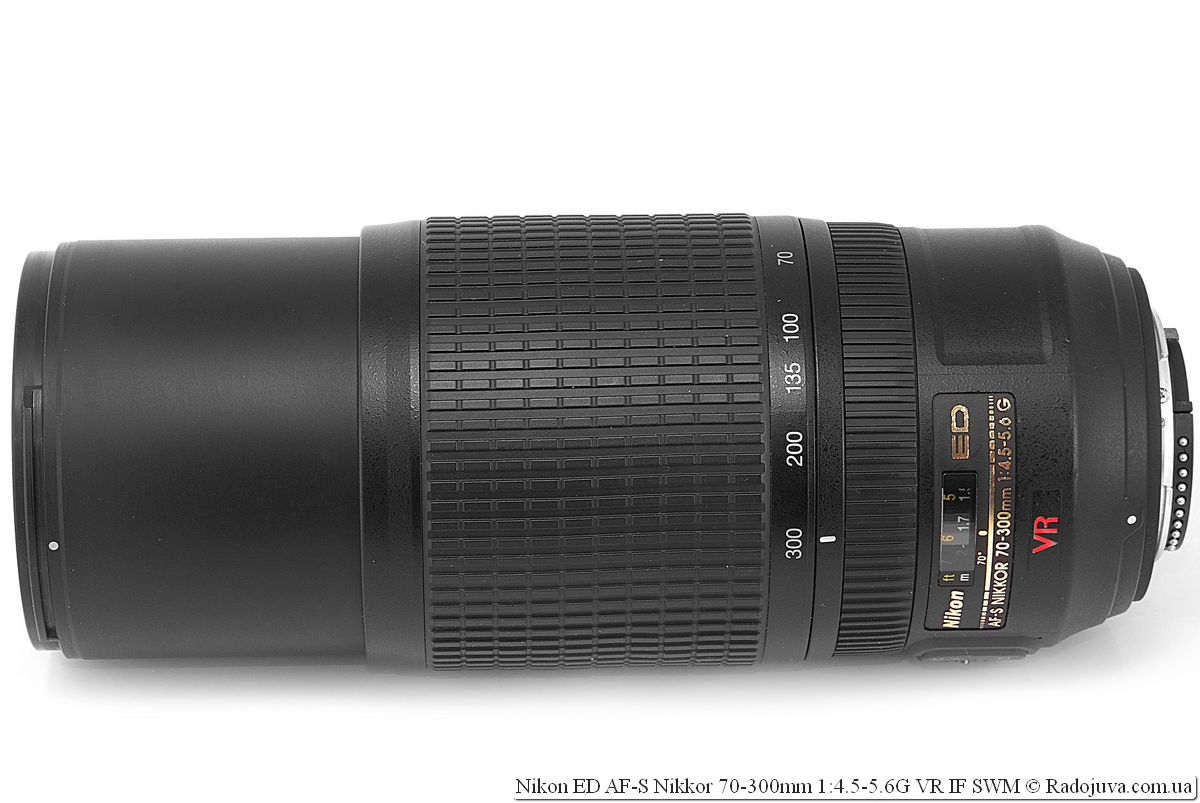
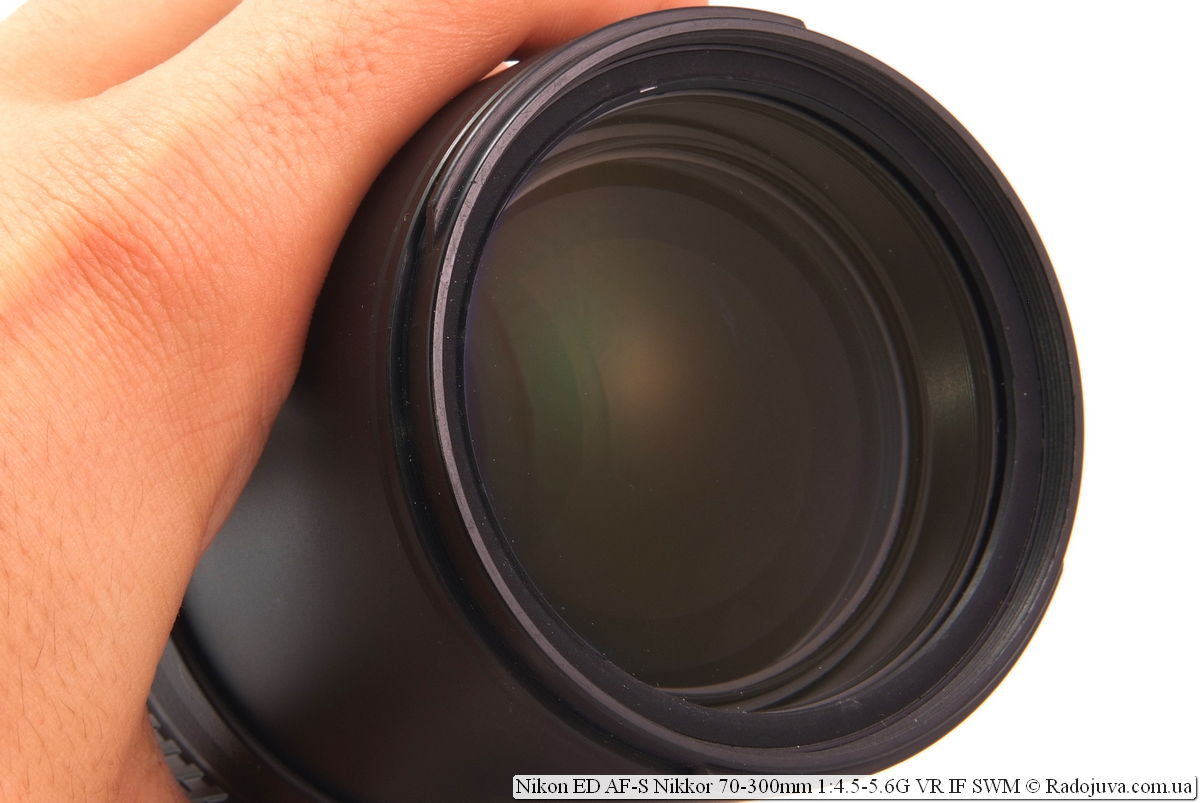
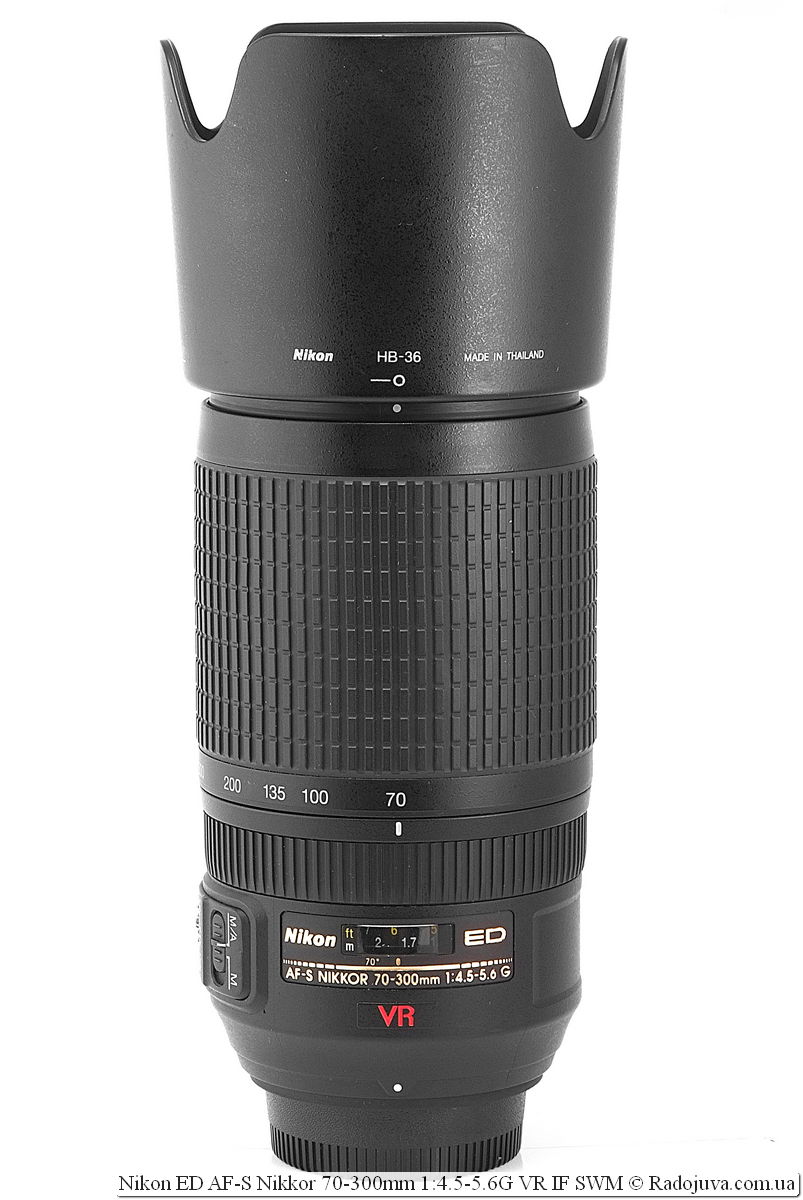
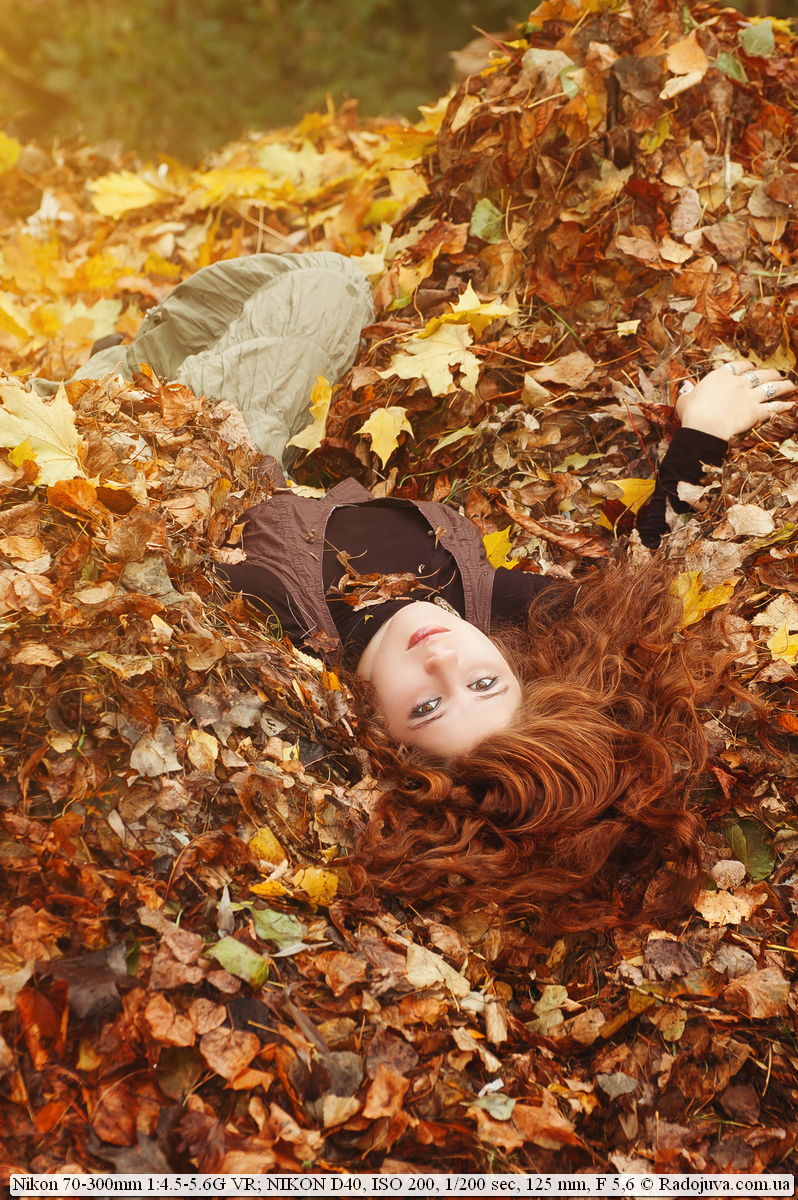

























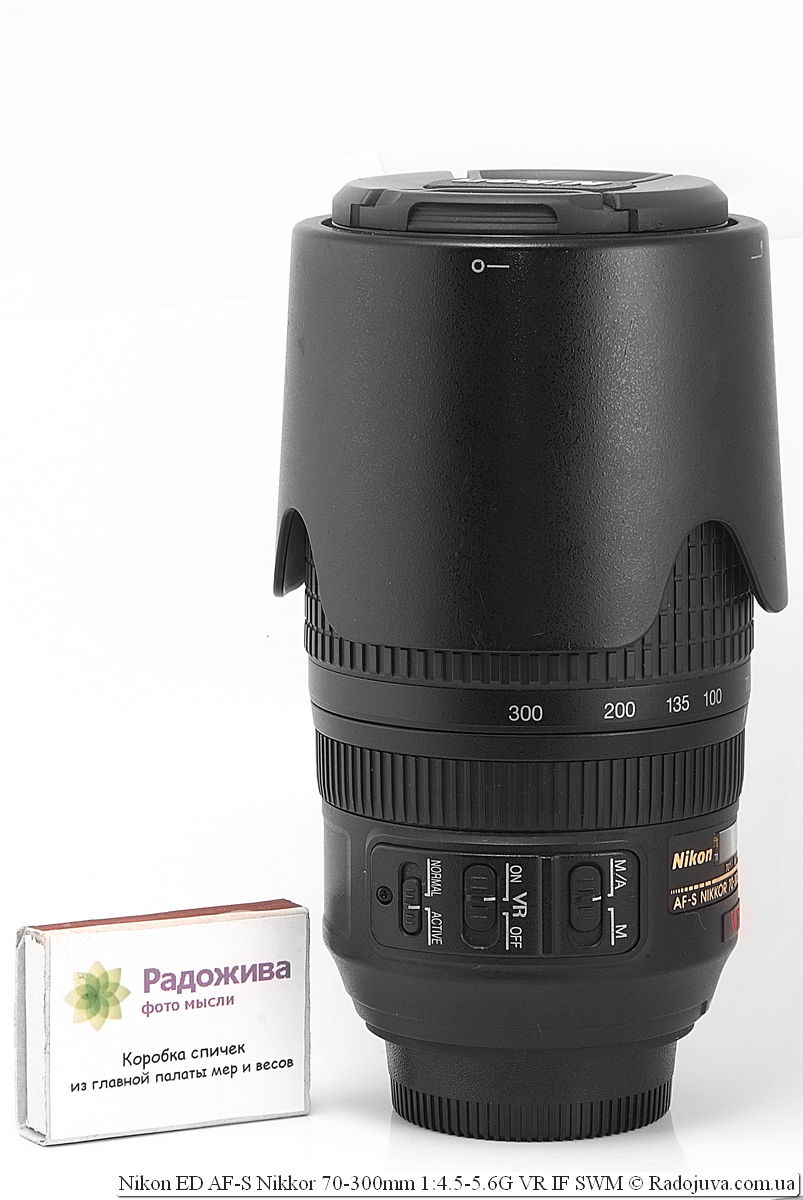
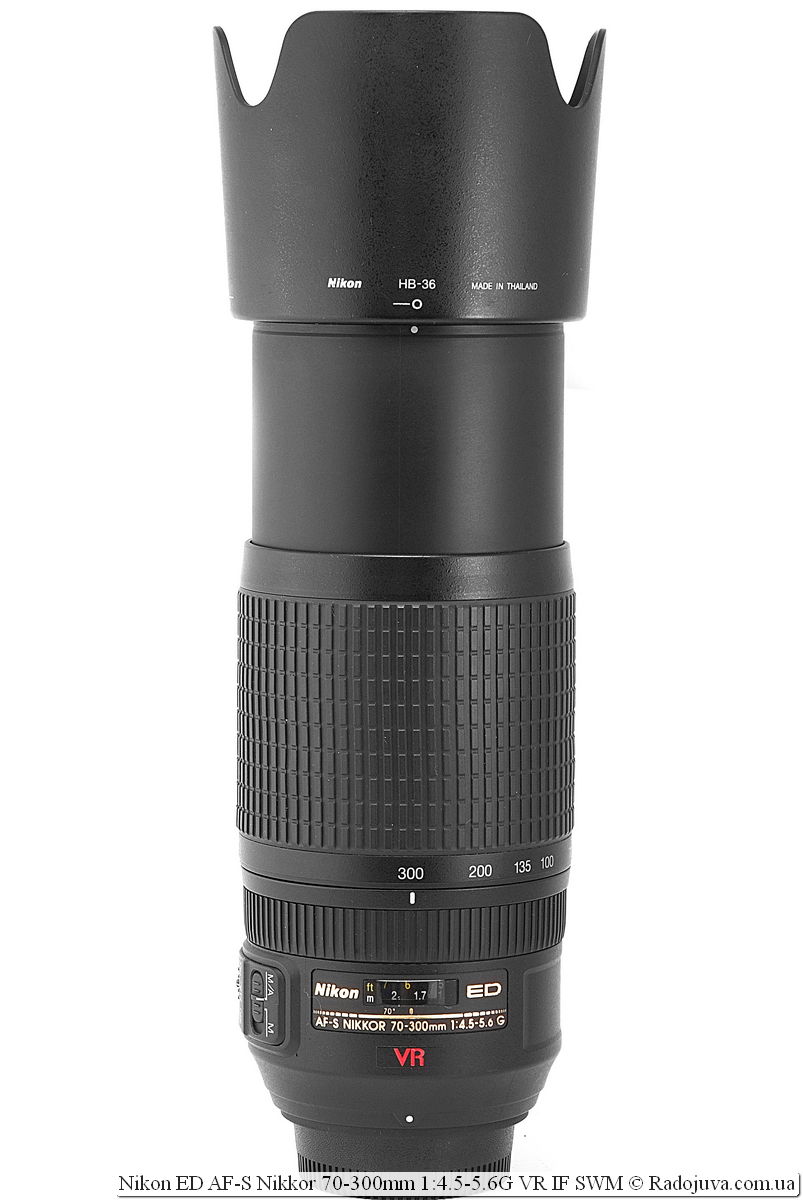
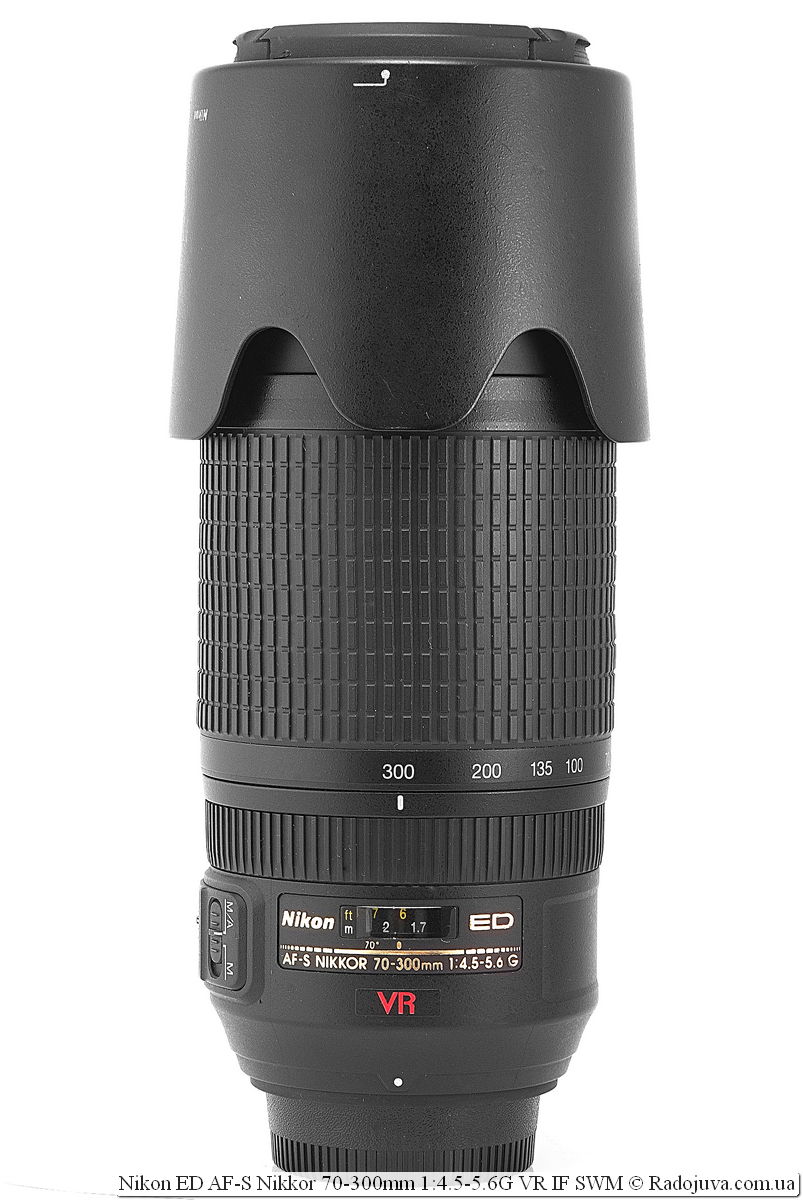
















Tell me for NIKO D5200 fit?
Yes, although what am I asking? Of course it does. But what else can you advise?
For simple tasks and for Nikon DX cameras, you can take Nikon 55-200mm f / 4-5.6G IF ED AF-S DX VR Nikkor or Nikon 55-300mm f / 4.5-5.6G DX AF-S ED VR HRI Nikkor, they are cheaper .
Thank you ... But someone called this lens “summer”, like he only shoots in sunny weather and on the street, and winter is ahead ... Will I buy it and where will I shoot? Is it so? In general, you are great, thank you for the reviews, for me - for a beginner, this is important and very useful!
In winter, there are also sunny days, and when snow is taken into account, there will be even more light. And the fact that to shoot only on the street is yes ... the first - the aperture is small, the second - the minimum focusing distance of 1.5 meters - you don't really roam at home.
Thanks for the answer! And what to shoot in the house? In the assembly halls?
For autumn, gray from November 1 and winter until February 25, you need to buy one light glass for now. I advise 50, you can also 35. They are very cheap, but all are bright! You won't regret it - for sure. 35 even on a cropped camera is good in the room, even.
Svetlana, with assembly halls everything is not unambiguous, if you need to grab something specific, it is easier to do it with a telephoto lens (usually there is plenty of light), and for general plans and shooting at home, the choice is not great - you have to use a whale (17-55) or fork out on expensive high-aperture zooms of a similar focal length range. There is an opinion that a 35 mm fix can send 17-55 to the shelf, but this is just an opinion and everyone has their own for their tasks.
Thank you ... Sometimes I have to shoot indoors, and sometimes children in halls, but more often I shoot outdoors. Thank you for your answers.
And a variant of such an asset without a stub is strongly seen in terms of image and image?
Tell me, is this lens suitable for the D7100?
Yes, it does.
Another question. Many say that certain optics reveal the potential of a multi-pixel matrix. Explain briefly what this is due to. I understand the quality of glass affects the quality of the picture or not.
What is the difference between the Nikon AF Nikkor 70-300mm f / 4-5.6 G from the one you described? It just costs 1000 UAH. and beckons with its price, I understand that he does not have a motor and a stub, he is interested in what else? Help me please!
I have the choice of 18-300, or by 18-105 I will buy 70-300. As I understand it, the 18-300 has an advantage in versatility. A bunch of 18-105 and 70-300 will have an advantage in quality in the television range. Correctly?
Need advice I have a D90 and Nikon 70-300mm f / 4.0-5.6D ED AF Zoom-Nikkor do I need to buy Tamron or Sigma 80-200mm 1: 2.8D for portraiture and reporting Thank you
Arkady, how wonderful that I found your site! Choice is always a difficult question. And choosing a camera is VERY difficult. I always took pictures with my eyes. Then digitally. Now it is not enough for me. Thanks to you, I made a choice - Nikon D7000 Body camera + Nikon AF-S 70-300mm f / 4.5-5.6G IF-ED VR lens. An expensive treat for me. Therefore, I ask your advice. Maybe Nikon D7000 Kit 18–105 VR is enough?
Valyusha, not only enough, but preferably. If you later need a telephoto, then buy the Nikkor AF-S 70-300mm f / 4.5-5.6G VR or something else.
PS
Nevertheless, I advise you to look towards the NIKON D7000 Kit AF-S 18-140 DX VR, somewhere 42000 p.
Arkady, hello! Thanks for the review, thanks to him I chose this particular lens. The question is this - when focusing, a rather loud click is heard in the lens and immediately after the picture is taken - another click. Is that how it should be? In the first couple of dozen frames, this was not. This question was already asked above, but it remained unanswered.
Good time of day! Help advice. I have a Nikon D5100 + Nikkor 18-105mm f / 3.5-5.6G ED AF-S DX VR. Does it make sense to change it to Tamron AF 18-270mm f3.5-6.3 Di II VC PZD or is it better to buy a Nikon 70-300mm f 4.5-5.6G IF-ED AF-S VR Zoom-Nikkor (with a similar price tag)?
Good evening, the topic is worn down to holes, but as an amateur I want to find out the exact answer for Nikond5100, what to take from two attached 55-300 or 70-300, both Nikor with autofocus and stabilization according to those data the second one has a slightly higher speed and everything seems to be the same, Thank you Alexander
and what about macro photography? good in this regard?
Arkady, thanks for the work in general and for this article in particular. I decided to buy this lens, although initially I looked at 55-300.
The casemate darkness does not bother him, nevertheless, for daytime shooting in the fresh air, it is taken, but still a couple of points are of interest:
1. Does the trunk ride under its own weight?
2. ease of use of this particular lens on crop (I understand that everything is subjective)?
3. Build quality (especially interesting if anyone has experience in the long-term operation of glass)?
owners please help with answers)))
1. No.
2. I use with the D5000. I do not feel any inconvenience.
3. The assembly is solid. Nothing backlash, no creaks, no stagger. Owned 1,5 years.
With comrade Nemo, a man, but not a steamer, I agree completely. I will add. At first ... uh ... even boyals, and now I take my D7000 out of the bag by the lens. I like it very much. Masterpieces are not guaranteed (even 10 million glass!), But you feel elated with it. In general, I really like zooms. I'm not good with fixes. Like an octopus that has all but one of its arms and legs cut off.
I welcome the participants in the discussion.
I am planning to purchase this second-hand lens in the near future and I would like to get an answer to Irina's question from 27.11.13/XNUMX/XNUMX, if possible, the following question - when focusing, a rather loud click is heard in the lens and immediately after the picture is taken - another click. Is that how it should be? In the first couple of dozen frames, this was not. This question has already been asked above, but it remained unanswered. " Moreover, I met one more such comment in the vastness of INETA.
Yes, it should be so. This turns on and off the image stabilization mechanism. The instructions indicate this and this does not pose any danger. The stabilizer works for a couple of seconds after pressing the focus button. Also, while the stabilizer is in operation, the lens is barely audible.
I confirm in full. These “overflows” (working noises of a stub and, perhaps, lens groups) also confused me, I even wanted to exchange another lens (14 days were from the store), but now I calmed down. The noises are even pleasing - it means that it works, it means that it tries!
Thank you for your prompt reply, for your work and for your help.
Interest Ask. What distance to the subject of photography at a focal length of 300 mm (crop) should be in order for the growth figure to fit in the sight?
Good day. This lens is faster in focusing speed than af-s-dx-nikkor-18-300mm-f-3-5-5-6g-ed-vr
I'm tormented with a choice
Thank you.
Comrades, you ask questions such as in the training in the army "What is the distance to the object of photography at a focal length of 300mm (crop) should be in order to fit a tall figure in the sight?" Are you going to shoot at him from a prone position from the AKM?))) Here is Arkady, how should this know? And how do you measure this distance when shooting, with a rangefinder or something?
If you take a person 2 meters tall and add 50 cm bottom and top for a beautiful layout, it turns out that you need to remove about 3 meters. At 300mm diagonally, the lens gives about 8 degrees of view for FF, vertically about 6 degrees. The distance to such a subject will be about 3 / tg (6) = 28 meters. Something like this.
Arkady do you think this lens is suitable for photographing aircraft at an altitude of 10 km? Or maybe there are examples of such photos
300mm is not enough for such a distance. The most budget option is to add a 2 * converter or 3M-5CA with a converter. In both cases, you will have to aim manually, so not every shot will be sharp.
Good day! Arkady, please tell me, with which lens is it better to take group shots? I often shoot performances of a large group of people on a whale lens Nikon D90 18-105 mm, and people get very good. small in the center of the photo, with a lot of free space left above and below.
For such photos, appropriate lenses are also required - wide-gatherers, widths, say, at the smaller end (if zoom) - 12,14,16 - 70 mm. The widest widths are fish-eye (in Russian - fish-eye). With this glass, you can photograph even the entire battalion of soldiers in your own barracks. But at the trial, probably, this photo will not appear in material evidence - reality, reality is greatly distorted.
Guys, advise what to take Nikon 70-300mm f / 4.5-5.6G ED-IF AF-S VR Zoom-Nikkor or Nikon 55-200mm f / 4-5.6G AF-S DX VR IF-ED Zoom-Nikkor. I want a telephoto, I can’t decide. 70-300 heavier and longer, the diameter of the thread for the filter is larger. Is it worth it?
I forgot to mention the recording above that now the D3100, I do not plan to switch to a full frame in the near future.
If you take a telephoto, then only this. And don’t listen to anyone else. The lens, of course, is not the best of the best, but the best of the really accessible for the ordinary hard worker (not a student, if not a major).
Nikkor AF-S 70-300 VR has fast and tenacious autofocus, unlike 55-200. For example, shooting 55-200 squirrel birds is another task .-)))